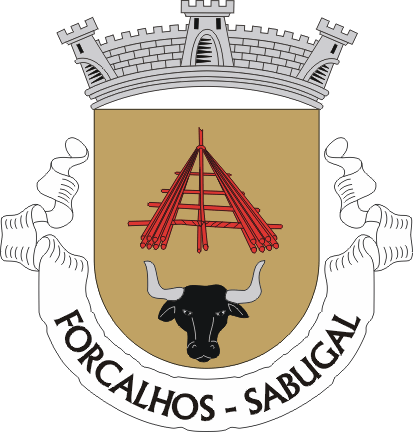Forcalhos: Difference between revisions
Jump to navigation
Jump to search
Knorrepoes (talk | contribs) m (Text replace - "|width="15%"|50 px|right |}" to "|width="15%"|50 px|right |}<seo title="Brasões de Portugal" />") |
Knorrepoes (talk | contribs) m (Text replace - "[[Literature" to "{{media}} [[Literature") |
||
| Line 19: | Line 19: | ||
The arms refer to the local tradition of bullfighting. The upper half shows a canting forcão, a wooden structure used in the bullfights to keep the bull in the filed. It is generally made of oak and up to 30 m are needed to lift and move it. | The arms refer to the local tradition of bullfighting. The upper half shows a canting forcão, a wooden structure used in the bullfights to keep the bull in the filed. It is generally made of oak and up to 30 m are needed to lift and move it. | ||
{{media}} | |||
[[Literature]] : image provided by [http://www.fisicohomepage.hpg.ig.com.br/index Sergio Horta] | [[Literature]] : image provided by [http://www.fisicohomepage.hpg.ig.com.br/index Sergio Horta] | ||
Revision as of 21:37, 8 July 2014
| Heraldry of the World Civic heraldry of Portugal - Brasões dos municípios portugueses |
FORCALHOS
Municipality : Sabugal
District : Guarda
Official blazon
Escudo de ouro, forcão de vermelho, encimando um encontro de touro de negro, armado de prata. Coroa mural de prata de três torres. Listel branco com a legenda a negro, em maiúsculas : “ FORCALHOS - SABUGAL “.
Origin/meaning
The arms were officially granted on December 21, 2000.
The arms refer to the local tradition of bullfighting. The upper half shows a canting forcão, a wooden structure used in the bullfights to keep the bull in the filed. It is generally made of oak and up to 30 m are needed to lift and move it.
Contact and Support
Partners:
Your logo here ?
Contact us
© since 1995, Heraldry of the World, Ralf Hartemink 
Index of the site
Literature : image provided by Sergio Horta










